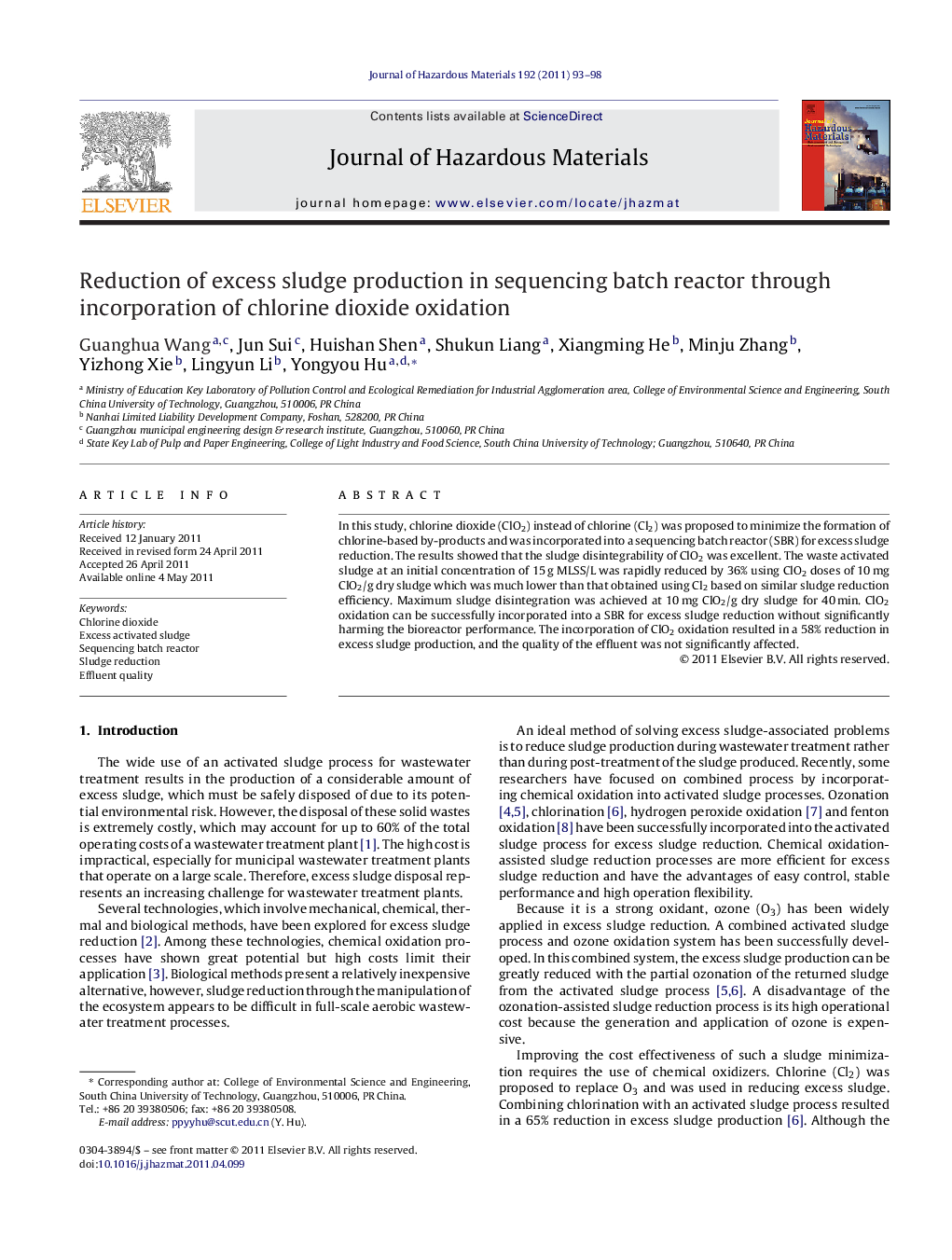| Article ID | Journal | Published Year | Pages | File Type |
|---|---|---|---|---|
| 579152 | Journal of Hazardous Materials | 2011 | 6 Pages |
Abstract
In this study, chlorine dioxide (ClO2) instead of chlorine (Cl2) was proposed to minimize the formation of chlorine-based by-products and was incorporated into a sequencing batch reactor (SBR) for excess sludge reduction. The results showed that the sludge disintegrability of ClO2 was excellent. The waste activated sludge at an initial concentration of 15Â g MLSS/L was rapidly reduced by 36% using ClO2 doses of 10Â mg ClO2/g dry sludge which was much lower than that obtained using Cl2 based on similar sludge reduction efficiency. Maximum sludge disintegration was achieved at 10Â mg ClO2/g dry sludge for 40Â min. ClO2 oxidation can be successfully incorporated into a SBR for excess sludge reduction without significantly harming the bioreactor performance. The incorporation of ClO2 oxidation resulted in a 58% reduction in excess sludge production, and the quality of the effluent was not significantly affected.
Keywords
Related Topics
Physical Sciences and Engineering
Chemical Engineering
Chemical Health and Safety
Authors
Guanghua Wang, Jun Sui, Huishan Shen, Shukun Liang, Xiangming He, Minju Zhang, Yizhong Xie, Lingyun Li, Yongyou Hu,
